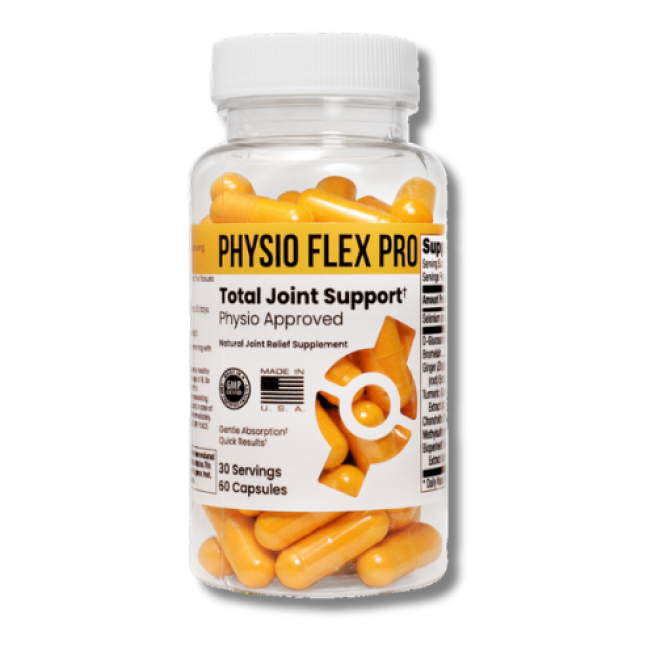In this article, I’ve provided in-depth information backed by scientific evidence on the usage, benefits, potential side effects, and recommended supplement of glucosamine and chondroitin for joint health.
Glucosamine and chondroitin are known to be the primary dietary supplements for joint health. Glucosamine is naturally derived from shellfish as an amino sugar, while chondroitin occurs in the connective tissues of animals. Combining these supplements is crucial for alleviating joint pain, promoting joint flexibility and mobility, and managing arthritis-related symptoms.
Learn the impact of glucosamine and chondroitin and alternative ways to take care of your overall joint health.
Understanding Glucosamine and Chondroitin
What is Glucosamine?
Glucosamine is a well-known dietary supplement to support joint health. A 2021 study from the National Library of Medicine detailed the existence and how glucosamine works.
This ingredient refers to a natural constituent of some glycosaminoglycans found in the synovial fluid, articular cartilage, and intervertebral disc through the proteoglycans. The use of glucosamine is commonly divided into two types, namely glucosamine sulfate and glucosamine hydrochloride, with its natural sources, which can contain bone broth, connective tissues of animals, and shellfish.
Forming the cartilage structure wouldn’t be possible without using glucosamine. With the help of another compound named chondroitin sulfate, glucosamine forms the structural framework of cartilage to provide flexibility and resiliency. Moreover, glucosamine contributes to proteoglycans and its synthesis within the cartilage.
Proteoglycans are big molecules of long chains of sugars and core proteins, including glucosamine and chondroitin sulfate. These molecules continue to be crucial for their shock-absorbing properties by giving cartilage the ability to retain water.
When is the best time to take glucosamine?
What is Chondroitin?
As a type of glycosaminoglycan (GAG) or a long chain of repeating sugar molecules, chondroitin, along with glucosamine, is one of the main components for the structure of cartilage. With chondroitin molecules being highly negatively charged, it enables cartilage to retain water.
The cushioning and shock-absorbing properties of cartilage wouldn’t be possible without hydration. Chondroitin’s common natural sources are found in the cartilage of animals like pigs, sharks, and cows.
A 2012 study showed that the association of chondroitin sulfate with GlcNAc is provided to repair cartilage after surgery because chondroitin sulfate inhibits ECM degrading enzymes while increasing collagen-II, hyaluronan, and glucosamine synthesis.
In maintaining the osmotic balance and hydration of cartilage, the influx of water becomes essential as chondroitin sulfate binds into sodium ions, drawing water molecules into the cartilage matrix.
Moreover, the chondroitin sulfate within proteoglycans contributes to the cartilage matrix’s gel-like structure, providing the cartilage with adequate resilience and strength. The tissue’s flexibility in cartilage is maintained through the interaction between collagen fibers and chondroitin sulfate.
What is MSM?
Methylsulfonylmethane (MSM) is an organosulfur compound with the formula (CH₃)₂SO₂. It is also known as dimethyl sulfone (DMSO₂) or methyl sulfone.
Here are some key points regarding MSM:
Natural Occurrence:
MSM occurs naturally in some primitive plants and is present in small amounts in many foods and beverages. It is a biologically active sulfur compound found in the human body, and is believed to be important for many bodily processes.
Health and Medicinal Claims:
MSM is often taken as a supplement to support joint health and to aid in the relief of chronic pain, osteoarthritis, and other inflammatory conditions. It could also help with other conditions like allergies and skin conditions.
Safety and Dosage:
MSM is generally considered to be safe when taken in appropriate amounts, and has been used in clinical trials with minimal adverse effects reported. However, the appropriate dosage can vary depending on individual circumstances and the specific health condition being addressed.
Commercial Availability:
Commercially, MSM is available in various forms including capsules, tablets, powder, or topical preparations. It can be found alone or combined with other ingredients, like glucosamine and chondroitin, which are also aimed at supporting joint health.
Athletic Performance:
Some athletes use MSM to help the body recover from exercise and injuries, as it's believed to have anti-inflammatory properties which can aid in reducing muscle soreness.
Beauty and Skincare:
MSM is also popular in the beauty industry, particularly for promoting healthy skin, hair, and nails due to its sulfur content which is essential for the production of collagen and keratin.
The Science Behind Glucosamine and Chondroitin
Glucosamine and chondroitin as primary dietary supplements can work individually and synergistically. As a key component of cartilage, glucosamine is the building block for synthesizing proteoglycans.
Moreover, glucosamine slows down existing cartilage degradation and can stimulate the production of new cartilage tissue. On the other hand, chondroitin can maintain the structural integrity of cartilage and maintain hydration by retaining and attracting water molecules in the cartilage matrix.
In terms of working together, glucosamine and chondroitin provide a comprehensive approach in enhancing cartilage health, improving joint lubrication, and reducing symptoms related to joints such as pain and stiffness. Moreover, the combination of these two dietary supplements can improve joint mobility and flexibility.
Recent studies show further benefits of glucosamine and chondroitin for joint health. In a 2022 mini-review , glucosamine imposes a beneficial effect on preventing osteoarthritis in young athletes, specifically soccer and rugby players, which was studied by a Japanese team. In this discovery, glucosamine inhibited chondrocyte apoptosis and matrix metalloproteinase production and stimulated a key enzyme regulating oxidative stress called haeme oxygenase-1.
Chondroitin sulfate was proven to be effective in the reduction of cartilage volume loss and as an acceptable therapeutic option in clinical terms in a 2022 study. The prescription of chondroitin sulfate in economic aspects implied a lower cost compared to non-steroidal anti-inflammatory drugs per patient.
Benefits of Glucosamine and Chondroitin
Joint Health
As primary dietary supplements, glucosamine and chondroitin can provide relief from symptoms related to osteoarthritis. The results of a 2018 study from the Journal of Orthopaedic Surgery and Research showed that oral chondroitin is more effective in improving physical function and relieving pain for osteoarthritis compared with placebo, while glucosamine showed efficiency in stiffness outcome.
In a different study published in the International Journal of Rheumatology, chondroitin sulfate and glucosamine sulfate are responsible for joint structure, resulting in increased mobility and reduced pain of the affected joint as well as slowing cartilage destruction progression.
In terms of imposing a regenerative effect, it was concluded in a study that glucosamine and chondroitin sulfate can reach the articular cartilage by passing into the gastrointestinal tract where it can have a chondroprotective effect.
Anti-inflammatory Properties
Both glucosamine and chondroitin are well-known for their anti-inflammatory properties for joint health. Glucosamine inhibits leukotrienes and prostaglandins as pro-inflammatory mediators, which play a vital role in inflammatory response.
Also, as a precursor of glycosaminoglycans (GAGs), glucosamine is involved in collagen formation by promoting tissue repair to reduce pain and inflammation. On the other hand, chondroitin sulfate is a component of cartilage that can reduce the release of inflammatory substances by preventing cartilage breakdown and cartilage preservation.
Other Potential Benefits
Aside from promoting joint health and acting as a remedy for treating joint-related conditions such as osteoarthritis, glucosamine, and chondroitin have other potential benefits.
A recent study showed that glucosamine chondroitin can produce hypersensitivity reactions in sensitive individuals since it can delay allergic reactions like skin rash. In terms of gut health, a 2021 study, glucosamine supplementation induced metabolome changes and fecal microbiota and provided functional gut health benefits through reduced stomach bloating and constipation.
In a different study published under Therapeutic Advances in Musculoskeletal Disease concluded that the prescription of chondroitin sulfate and glucosamine has a protective effect in reducing the risk of ischaemic stroke (IS).
Side Effects and Precautions
While glucosamine and chondroitin are considered to be generally safe to take for individuals, their effectiveness can still vary by imposing potential side effects. Common side effects include heartburn, nausea, diarrhea, swelling, and skin rash. In rare cases, some individuals can experience high blood pressure, elevated liver enzymes, and might affect blood sugar levels.
Before taking supplements containing glucosamine and chondroitin, taking necessary precautions is crucial. It’s essential to consult a healthcare professional before taking these supplements if you’re currently pregnant. Make sure to avoid taking these supplements when you’re allergic to shellfish, bleeding disorders, asthma, diabetes, and if you have other existing health conditions.
FAQs
1. What are the side effects of glucosamine?
Glucosamine can impose potential side effects like nausea, diarrhea, upset stomach, allergic reactions like skin rashes, and increased blood sugar levels.
2. How long does it take for glucosamine to work?
Take note that the effectiveness of glucosamine can vary among individuals. However, improvement in taking glucosamine can generally take up to eight weeks.
3. What is the recommended dosage of glucosamine?
The typical recommended dosage is 1,500mg per day. A 2008 study from the American of Family Physicians showed that 500mg three times a day is usually the dosing schedule of glucosamine.
4. Can glucosamine be taken with other supplements or medications?
Yes, but it’s still crucial to hear the suggestion/advice of a healthcare professional before taking it with other medications to avoid potential side effects.
5. Are there plant-based or vegetarian alternatives to glucosamine?
Plant-based or vegetarian alternatives include botanical extracts, herbs, enzymes, and vegetarian glucosamine, which is derived from fungal sources like Aspergillus.
Product Recommendations
If you’re looking for a comprehensive joint supplement that contains glucosamine and chondroitin, Physio Flex Pro is a widely used supplement by athletes for joint health. This provides anti-inflammatory properties, cartilage protection, pain reduction, and increased joint mobility.

The dosage of glucosamine in this supplement is 500mg, while chondroitin dosage is 100mg.
Other ingredients include:
- selenium (200mcg)
- bromelain (300mg)
- ginger extract (250mg)
- turmeric extract (200mg)
- MSM (100mg)
- bioperine (10mg)
Conclusion
To summarize this article, glucosamine and chondroitin will remain one of the well-known ingredients in supplements for joint health. They’re responsible for improving joint mobility and flexibility, cartilage repair, possess anti-inflammatory properties, and alleviating pain for people with osteoarthritis.
Despite their general safety use, be cautious of its potential side effects and consider consulting a healthcare professional before taking it with other medications and if you’re currently pregnant.
Healthcare professionals can always provide personalized guidance depending on your existing condition or medical history to avoid experiencing severe symptoms.






